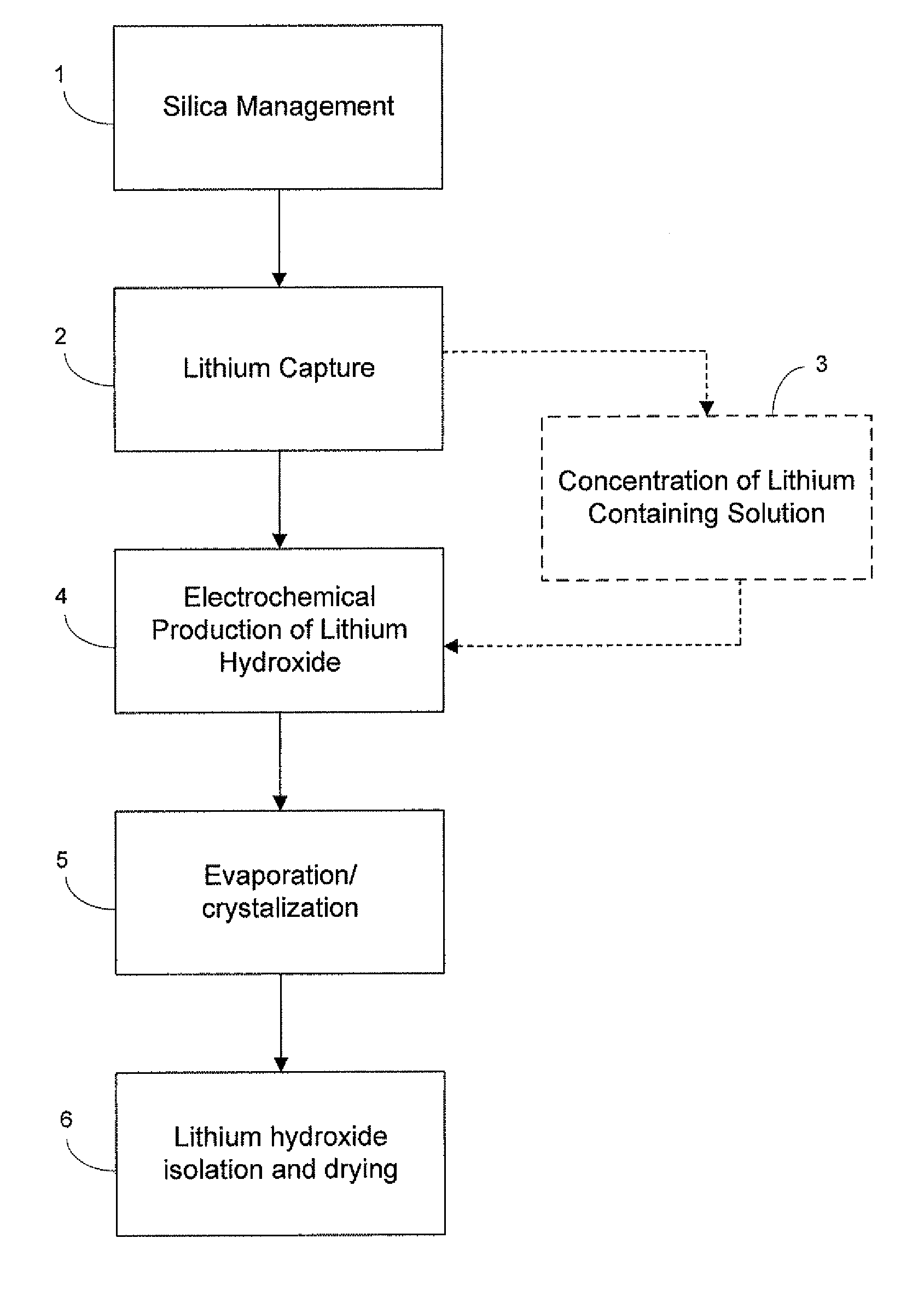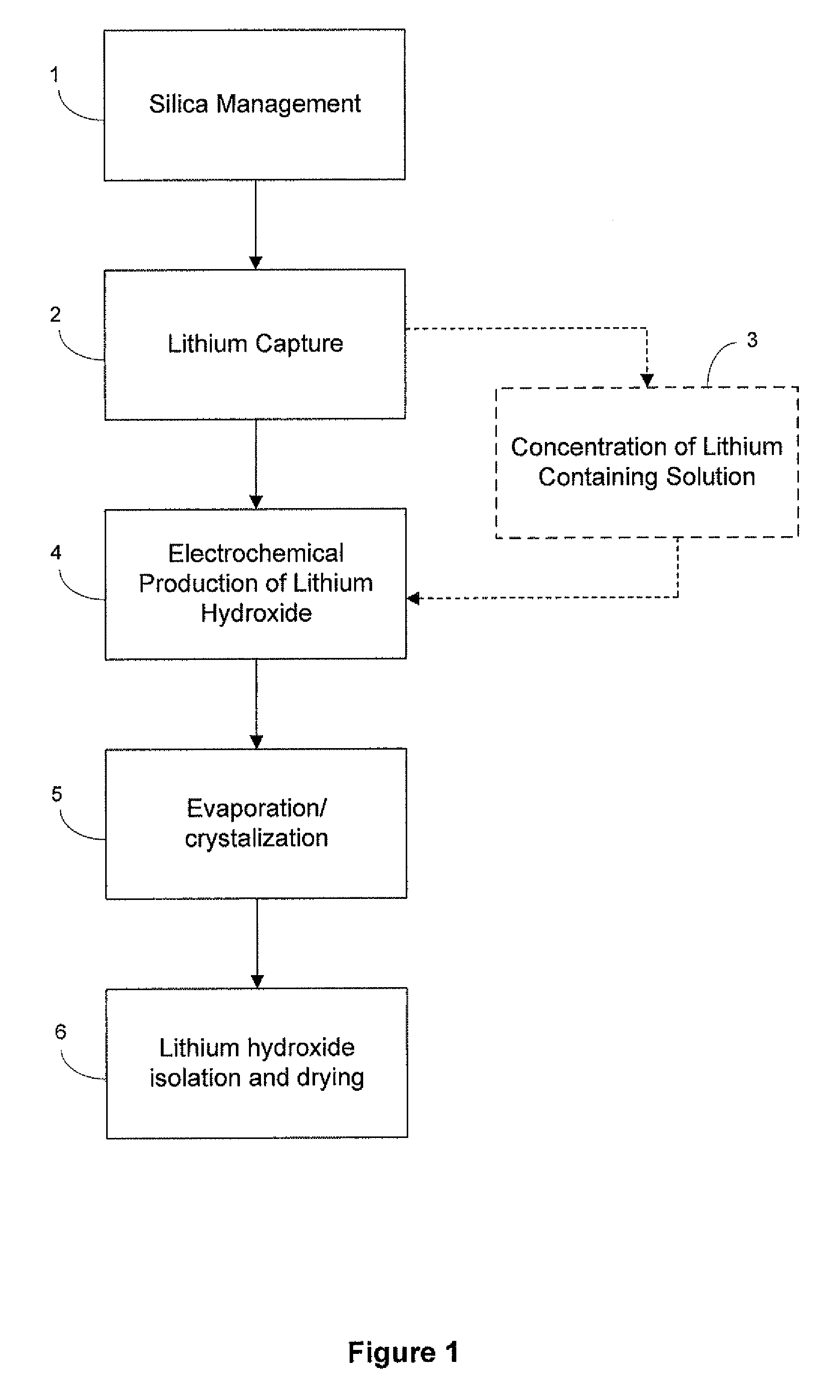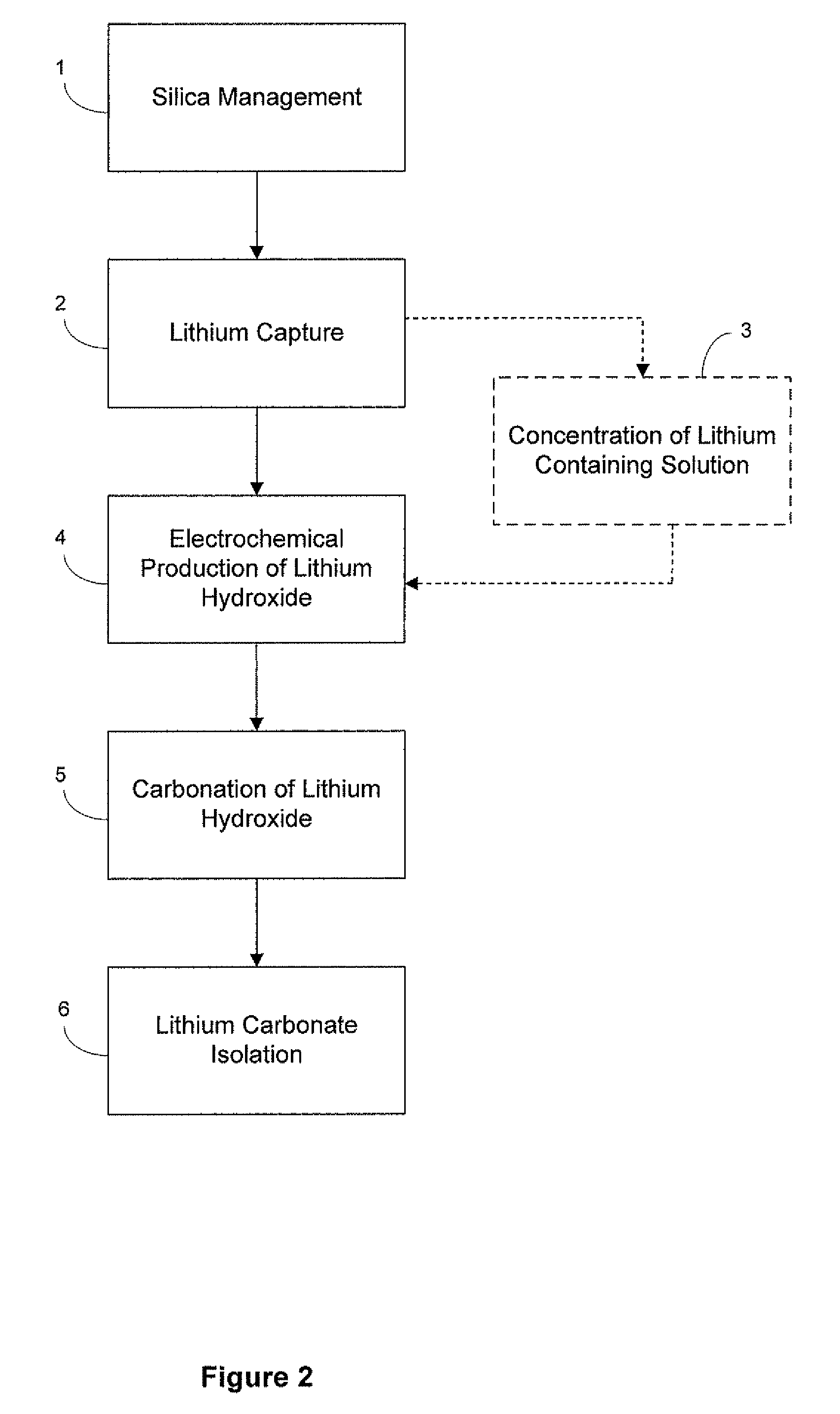Preparation of lithium carbonate from lithium chloride containing brines
- Summary
- Abstract
- Description
- Claims
- Application Information
AI Technical Summary
Benefits of technology
Problems solved by technology
Method used
Image
Examples
example 1
Carbonation of Sodium Hydroxide
[0077]Carbonation of sodium hydroxide was carried out using a 3 liter jacketed reactor with a heating system (manufactured by Syrris Reactor Systems, UK). The reaction was carried out at a temperature of about 95° C. using a one liter of a 9.5 M solution of sodium hydroxide (27.5% solids). Carbon dioxide was supplied for about 1 hour at the rate of 3 L / min. (totaling approximately 8 moles, approximately 1.7 molar equivalents) to ensure the complete conversion of sodium hydroxide. At the end of the carbonation of the sodium hydroxide solution, a clear solution of sodium carbonate was obtained, at which point the carbonation reaction was stopped and heating of the sodium carbonate solution was continued for few minutes. To the clear solution, lithium carbonate seeds were added before reacting it with a lithium chloride solution (404 g lithium chloride in 1000 mL). Experimental yield was 95%. Yields varied for other similar reactions depending upon experi...
example 2
[0080]The electrolysis process converts a purified, concentrated lithium chloride solution into a concentrated lithium hydroxide solution for subsequent conversion to lithium bicarbonate. The limiting factor determining the efficiency of the electrochemical cell is the concentration of lithium hydroxide in the catholyte, due to back-migration of hydroxide across the membrane. Therefore, the experiment was designed wherein the electrochemical cell was operated at four different hydroxide concentrations to map the effect of the lithium hydroxide concentration and determine the maximum concentration that could be prepared. The experiment was designed to measure the current efficiency and energy utilization of the dialysis process as a function of hydroxide concentration. Within the electrochemical cell, under an applied field, lithium cations migrate from the anolyte to catholyte, while water present is electrolyzed to H2 and OH− at the cathode. In theory, each electron passed in the e...
example 3
Electrolytic Production of Lithium Hydroxide from Lithium Chloride
[0081]Experimental Set-Up.
[0082]The electrolysis system consisted of the electrolysis cell having anolyte and catholyte flow systems. Electrolysis of lithium chloride solutions was carried out using an FM01 electrolyzer (a scale model of the FM21 electrolyzer used commercially in the chlor-alkali industry) manufactured by ICI. The electrolyzer included lantern blade-style electrodes (anode: ruthenium oxide coated titanium; and cathode: nickel), and a Nafion® 982 membrane. The active surface area of each electrode was about 64 cm2 (4×16 cm), and the cell gap (distance measured anode to cathode) was between about 12-13 mm. The FM01 electrolyzer was operated with the flow parallel to the 16 cm direction (as compared with a flow direction parallel to the 4 cm dimension, as it is intended to be operated), as this improved the management of chlorine and hydrogen gasses evolved from the electrodes. In addition, although anol...
PUM
| Property | Measurement | Unit |
|---|---|---|
| Temperature | aaaaa | aaaaa |
| Temperature | aaaaa | aaaaa |
| Volume | aaaaa | aaaaa |
Abstract
Description
Claims
Application Information
 Login to View More
Login to View More - R&D
- Intellectual Property
- Life Sciences
- Materials
- Tech Scout
- Unparalleled Data Quality
- Higher Quality Content
- 60% Fewer Hallucinations
Browse by: Latest US Patents, China's latest patents, Technical Efficacy Thesaurus, Application Domain, Technology Topic, Popular Technical Reports.
© 2025 PatSnap. All rights reserved.Legal|Privacy policy|Modern Slavery Act Transparency Statement|Sitemap|About US| Contact US: help@patsnap.com



